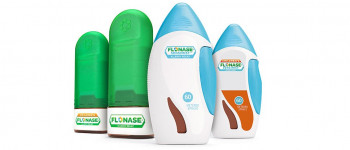What Is The Difference Between Xalatan And Vyzulta?
In our latest question and answer, the pharmacist discusses the difference between Xalatan and Vyzulta.

Question
My first eye doctor started me on Xalatan, but now my new doctor wants to try Vyzulta. I picked it up from the pharmacy yesterday and as far as I can tell, it's the same drug (latanoprost). Is there any difference between them?

Answered by Dr. Brian Staiger, PharmD
Medical Content Reviewed By HelloPharmacist
Staff
Last updated Jul 08, 2025
Key points
- Xalatan (latanoprost) and Vyzulta (latanoprostene bunod) contain different active ingredients.
- After administration, Vyzulta (latanoprostene bunod) is broken down into latanoprost and nitric oxide, which work via different pathways to reduce pressure in the eye.
- Clinical trials for both drugs show little clinical difference between the two drugs, and they lower eye pressure to a similar degree.
- Vyzulta (latanoprostene bunod) is currently only available as a brand name, and is significantly more expensive than Xalatan.
Answer
Xalatan and Vyzulta have a similar looking active ingredient, but they are different. Xalatan contains latanoprost while Vyzulta contains latanoprostene bunod.
I discuss in the next sections how these are different, but it is important to note from the outset that there is only a very minimal difference in how well they work to treat glaucoma.
Different Active Ingredients
As mentioned, Xalatan and Vyzulta have different active ingredients.
Xalatan contains latanoprost, a prostaglandin. Vyzulta contains latanoprostene bunod, which, when administered is broken down to two components:
- Latanoprost
- Nitric oxide
So, in a sense, Vyzulta simply adds on an additional component to Xalatan (nitric oxide).
Vyzulta is often described as having a 'dual-mechanism of action' since it works two different ways to lower intra-ocular pressure (IOP).
The manufacturer's website does a good job of explaining how latanoprost and nitric oxide work via different pathways (specifically, they increase the outflow of aqueous humor through both the trabecular meshwork [nitric oxide] and uveoscleral [latanoprost] routes).

There Is Not Much Clinical Difference Between Xalatan and Vyzulta
Clinical trials for Xalatan and Vyzulta show they both lower intra-ocular pressure by essentially the same amount:
- For Xalatan (latanoprost), patients with an average intraocular pressure of 24 – 25 mmHg were treated for 6 months and had a 6 – 8 mmHg reduction in pressure.
- For Vyzulta (latanoprostene bunod), patients with an average intraocular pressure of 26.7 mmHg were treated for 12 months and had a 7 – 9 mmHg reduction in pressure.
Price
The price difference between Vyzulta and Xalatan is a big consideration. Xalatan is available generically while Vyzulta is not.
Vytuza costs about $360 per 5 mL bottle, versus $12 for a 2.5 mL bottle of latanoprost. This is a significant difference.
In most cases, even if your insurance covers Vytuza, it will likely have a higher copay than generic Xalatan.
For most individuals, it would make sense to use Xalatan first, and if you don't see the appropriate clinical response, Vyzulta could be an option.
Final Words
Thanks for reaching out to us! Please contact us again anytime.
-
 Dr. Brian Staiger, PharmD
Dr. Brian Staiger, PharmD
- 4384 views


